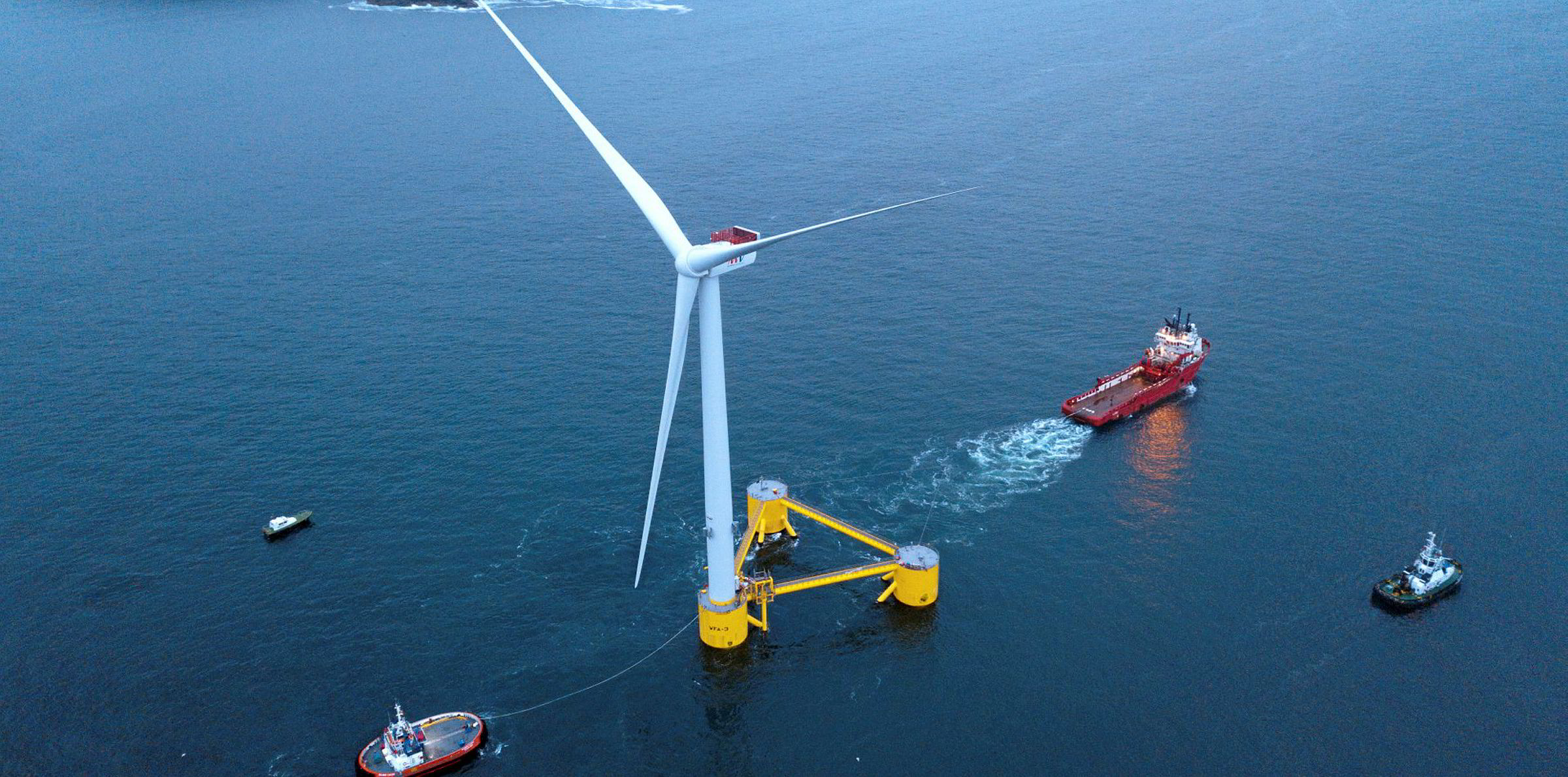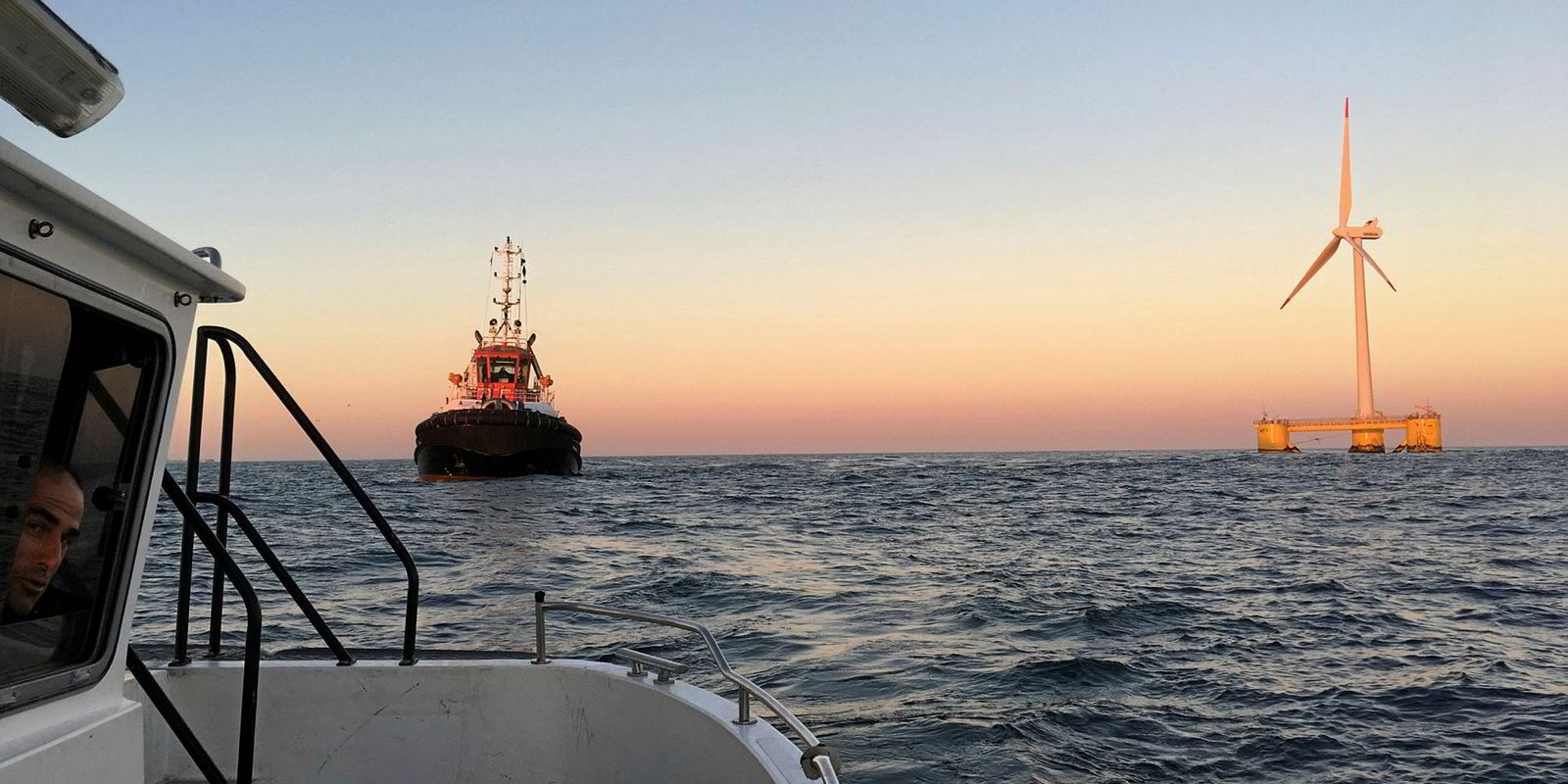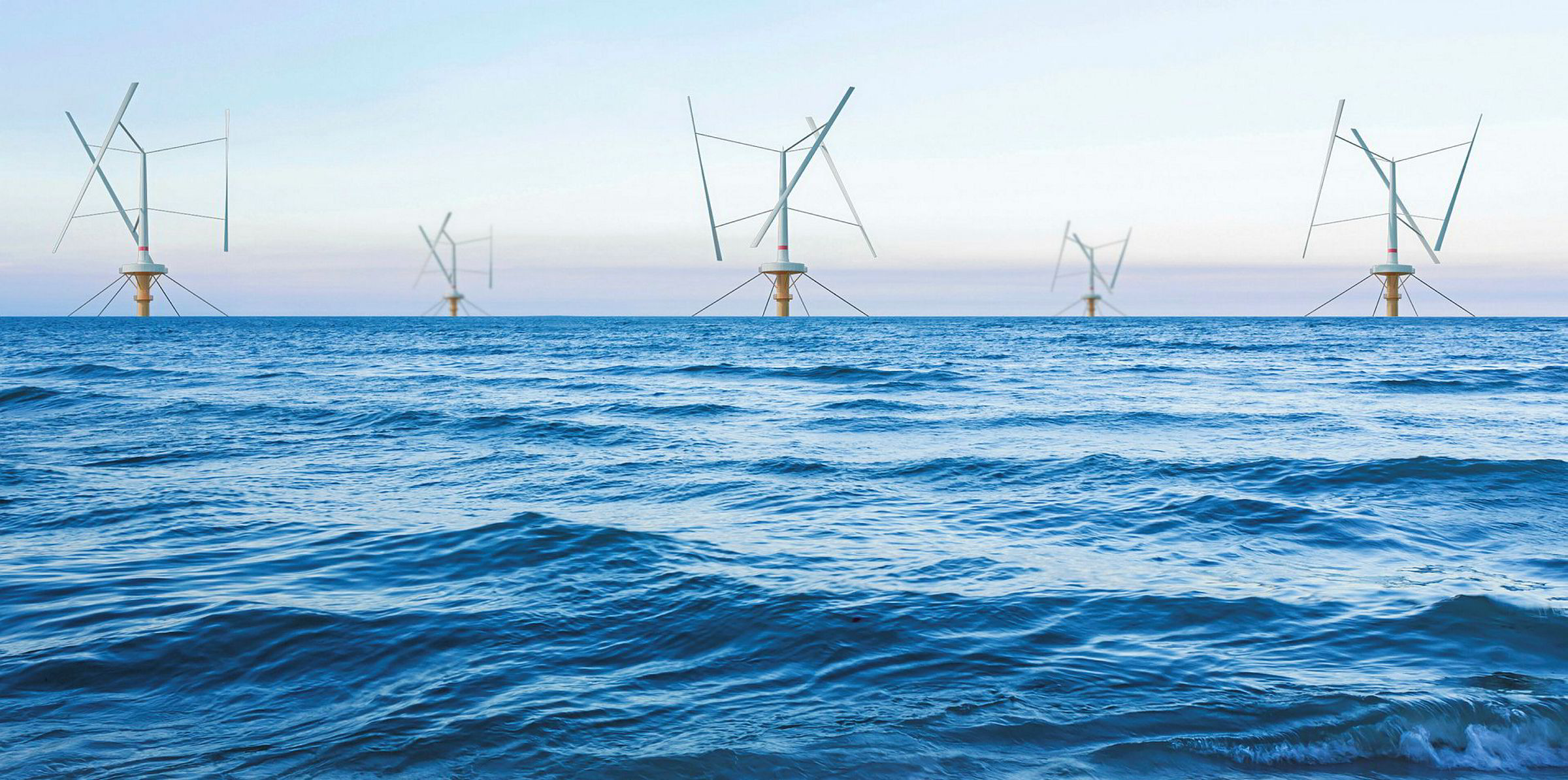The first of three units that will make up continental Europe’s flagship floating wind array has started tow-out from its construction yard in Ferrol, Spain, for installation in the deep waters off the northwest coast of Portugal, as part of the EDP Renewables-led 25MW WindFloat Atlantic (WFA) project.
Along with two sister units being built near Setúbal, Portugal, that are set to arrive at the project site 20km off Viana do Castelo “in the coming months”, the platform, designed by US outfit Principle Power Inc (PPI) and fitted with a 8.3MW MHI Vestas V164 turbine, will contribute to producing power to supply 60,000 homes.
Deploying the trio of WindFloats will not only mark a milestone for the floating wind industry in Europe as the first project to reach switch-on since the world’s maiden array, Equinor’s 30MW Hywind Scotland, in 2017, but also as the first to be built without heavy-lift construction vessels, a key cost-reduction area for the sector as it tries to shave down its levellised cost of energy (LCOE) to compete with bottom-fixed offshore wind.
“We are extremely excited to see this flagship WindFloat Atlantic project taking shape offshore and couldn’t be prouder of all the hard work done by the teams that made this possible,” said PPI CEO João Metelo.
“We now mark the beginning of a new era, where floating wind enables the true globalisation of offshore wind and firmly establishes this industry as the renewable energy source with the highest growth for the coming decades.”
PPI vice president and head of engineering, Antoine Peiffer, told Recharge: “It’s been ten hard years of work [for PPI since the WindFloat design was launched] and it’s true if we were to simply repeat [the construction methodology] and reproduce WFA for future projects, we would not reach commercialisation. But, of course, we won’t do that.”
“We have learned what can be improved and how to change it for the next generation of the WindFloat and we have several projects under development, including WFA, that will take advantage of the progress we’ve made,” he continued.
“It will only take some slight modifications of technologies [coming from lessons learned during construction of the WFA units] which are essentially based on the move into full mass production.”
PPI’s WindFloat, a three-column, steel semisubmersible concept with the turbine mounted on one column, was the second design – after Equinor’s 2.3MW Hywind Demo off Norway – to get an industrial-scale model into the water, with the 2MW WF1 operating in the Portuguese Atlantic from 2011-2016 under a “full life-cycle” prototype project .
“Everything was brand new [when WF1 was built] – it was [most of all] a question of ‘can we put a wind turbine on a semisubmersible?’” said Peiffer.
“WFA is about taking everything we have proven as feasible on WF1 and then enhancing the designs to improve efficiency and ensure reliability at high power output for a 25-year service life.
“It’s also about developing the overall execution model to accommodate the likelihood of having to construct multiple units of a single design in a number of different facilities concurrently, while achieving a commercially acceptable construction cost and schedule in all facilities.”
Peiffer added: “We feel that this represents the final significant step in making the technology truly commercial for projects around the world.”
WF1, which tipped the scales at 1,300 tonnes, was built over a year at Portugal’s Lisnaveyard. The three ‘more advanced’ WFA units, weighing around 2,000 tonnes, have “greatly improved economics” as they are topped with turbines over four-times more powerful, but were all built in the same one-year time-frame.
“We are encouraged by the potential to achieve further LCOE reductions with the WindFloat platform. We’ve come a very long way from our initial prototype and are on the path to achieving an LCOE that is competitive with bottom-fixed offshore wind, which is on track to be below €50/MWh [$56/MWh] by the early-2020s.
“We are also confident that our execution model will enable us to achieve production rates of getting more than one unit every week into the water,” Peiffer added. “A wind farm of 20-50 units in a [construction] season is our goal.”
As well as WFA – being developed by Windplus, a consortium made up of EDPR (54.4%), France’s Engie (25%), Spain’s Repsol (19.4%) and Principle Power (1.2%) – the WindFloat platform is currently in the frame for large-scale projects in all major maritime regions around the world, including being employed on one of four pilots off France heading for switch-on in 2020/21, as well as for what could be the US’ first floating wind development, a 150MW project being planned off northern California for switch-on as early as 2024.
The original WF1 was brought back into service this year as a ‘scout’ unit for Scotland’s Kincardine array, which will use another five of the larger versions of the platform – near-identical in design to the WFA units – for the full 50MW development now moving ahead in the North Sea off Aberdeen.
Commissioning of WFA is slated to be complete later this autumn.



